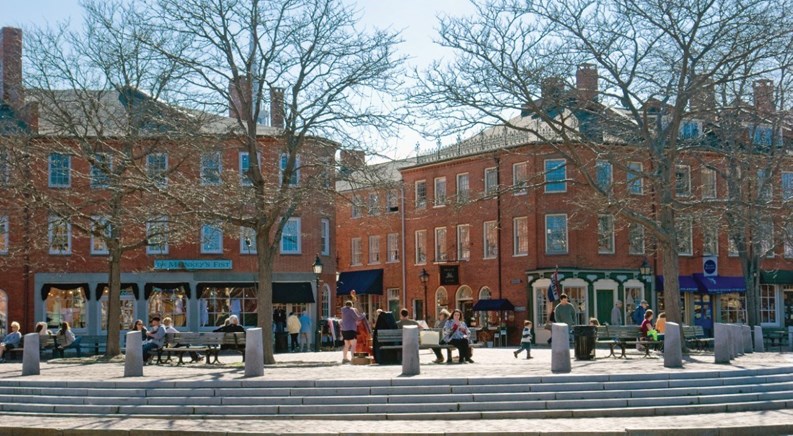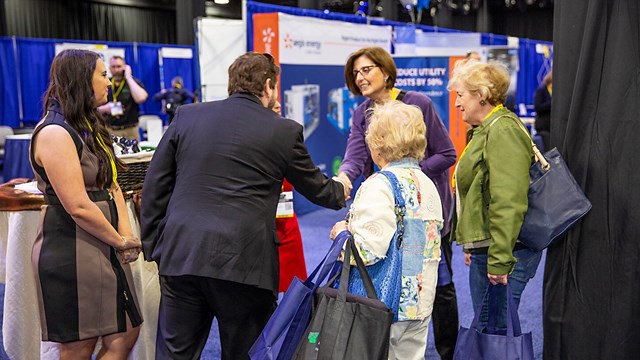When the city of Newburyport incorporated in 1764, it encompassed less than 10 square miles and had a population of about 3,000 people. Today, the city still covers less than ten square miles and has a population of fewer than 18,000 residents. From its initial European settlement in 1635 to the present day, much has changed in this small New England port – and much has remained the same. Located on the coast 35 miles north of Boston, modern Newburyporthas boatyards, beaches, wildlife preserves, historic buildings and city festivals to draw people to this reinvented port city, where recreation is the new commercial trade.
The Good Old Times
Situated at the mouth of the Merrimack River and the shores of the Atlantic Ocean, the sea has driven the economic growth of Newbury-port for more than 350 years. In its earliest years, the port was the economic powerhouse of the town. Whaling, fishing, shipbuilding and trans-Atlantic trade allowed the town, and the port inparticular, to thrive. The commercial success of the port was strong enough to allow the port to separate from the town of Newbury and become a separate incorporated entity in 1764.
Walk down virtually any street and you will see vestiges of the town’s successful shipping past. High Street is lined with the gracious homes of sea captains and shipping barons. According to the website of the Society for High Street, whose mission is to “preserve the legacy of High Street for future generations,” fewer than 10 of the 230 buildings on High Street are less than 50 years old. Market Square, also on the National Register of Historic Places, is described by the National Park Service as “one of the last seaport districts remaining from the golden days of New England shipping.” The U.S. Customhouse, the harbor lighthouses, elegant homes and brick shops are all preserved reminders of Newburyport’s prosperous maritime history. When the shipping trade weakened in the 19th century, industry helped keep the city economically viable. Many of the original mills and tanneries can still be seen today. On Water Street, “The Tannery” is a restored complex of original tannery buildings that have been converted to 75,000 square feet of shops, restaurantsand galleries.
The Not So Good Times
Like many small towns in Massachusetts and throughout the country, the decline of industry and the growth of suburbs and strip malls threatened the survival of Newburyport in the 1950s and 1960s. By 1970, economic decline left much of the downtown slated for demolition. Ann Ormond, president of the Greater Newburyport Chamber of Commerce, noted it took many dedicated people, including the then-mayor Byron Matthews, to stop the wrecking balls and point the city toward a new path – the path of preservation and restorationof the downtown and waterfront.
The New Good Times
Thanks to the preservation effort of the 1970s, Newburyport, once active with whalers and shipbuilders, now teems with tourists and residents, birders and shoppers. Inn Street, one of the city’s oldest, was converted to a brick-paved street lined with fine shops. The shipyards, which once produced and launched clipper ships (including the first U. S. Coast Guard vessel, the Revenue Cutter Massachusetts), are now busy boatyards that maintain, store and moor recreational boats. Market Square, which once hosted its own rebellious tea party, has become the bustling retail center of a restored and re-imagined downtown.
Nature, as well as history, has been preserved in this port city. Newburyport, which includes part of Plum Island, abuts fantastic natural wealth: ocean, forests, beaches, marshes and ponds. Only four miles from downtown, the Parker River National Wildlife Refuge is a nearly 5,000 acre mecca for birders and other nature-lovers who come to see the thousands of birds that migrate through the area. The Massachusetts Audubon Society calls the Parker River Refuge and the Plum Island Estuary, “one of the country’s most productive year-round wildlife viewing areas.” Along with migratory birds, you may spot deer, coyotes, sharks, beaver, sealsand, if you happened to be visiting in February of 1980, a 28-foot giant squid that washed ashore.
Recreation Abounds
For those looking for more active recreation, Newburyport also boasts a variety of parks, playgrounds and public beaches. Cross-country ski or ride horses at the 480-acre Maudslay State Park, play in the waves off of the Plum Island beaches, or hang out at the Newburyport Skate Park. In addition, the city is developing a “Clipper City Rail Trail” between the Merrimack River and the MBTA Commuter Station specifically for bicycling, walking and jogging. According to the NewburyportOffice of Planning and Development, construction of this new public space will begin this summer.
If you have had your fill of ocean, boats and wildlife, never fear. Options abound in Newburyport. Along with art galleries, theaters, and dance studios, Newburyport bustles with festivals throughout the year, including the Newburyport River Front Music Festival, Yankee Homecoming, the Fall Harvest Festival, as well as a spring festival, a documentary film festival, and a chamber music festival. Supported by the Chamber of Commerce, these popular festivals draw tens of thousands of people each year and promote shopping, lodging and dining in the city.
Direct Rail Service to Boston
Located on Route 1, and near the interchange of Interstates 95 and 495, Newburyport is easily accessible from Boston and surrounding areas. Sweetening the pot, the MBTA expanded direct commuter rail service from Boston’s North Station to Newburyport several years ago. This has made a major difference in the real estate market, according to Valerie McGillivray of Vernon A. Martin Inc, Realtors, who noted, “younger couples are coming in…they love Newburyportand work in Boston.”
In addition to serving as a bedroom community to Boston, Newburyport has actively promoted its own commercial growth. In addition to tourismand retail commerce, there are established financial and service sectors, as well as some light industry. Dexter Industrial Green, an industrial park on the edge of town, is “quite a little jewel,” according to Ormond. The Newburyport Department of Economic Development promotes the park as 1.5 million square feet of industrial buildings, with industries such as food processing, electronics and pharmaceuticals.
Real Estate Going Strong
Newburyport’s modern economic strength is reflected in the real estate market. According to the city assessor, the average value for a single family home in 2008 was $487,000, the average median price was $434,200. Of the approximately 4,000 homes in the city, 500 are on Plum Island, many of those are high-end summer “cottages.” The city assessor office also lists a condominium inventory of about 2,000 units, with an average value of $327,000 and a median value of $308,100. The majority of condos are conversions, with the remaining 600 or so distributed among several complexes, including Maritime Landing and River’s Edge.
Accessible by boat, commuter train and highway, and boasting historic buildings, natural beauty and growing commerce – this quintessential New England port is an increasingly popular place to visit – or to call home. By successfully connecting nature and commerce; preservation and growth, Newburyport is once again a vibrant and viable little city.
Sarah Sanford is a freelance writer from Amherst, Massachusetts.







Leave a Comment